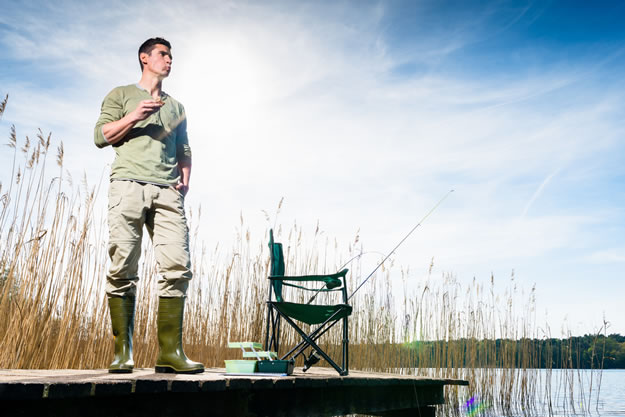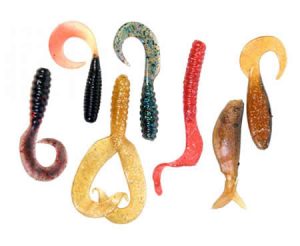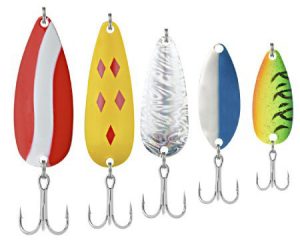Basic Fishing Equipment for Survival

Survival fishing! It’s often discussed amongst friends, even glorified on television. Humanity doesn’t set out to get stuck alone without cellular communication, friends, family or civilization within earshot. But when it happens, you can bet your sweet ass the unprepared will suffer gravely.
Imagine this scenario. You’re trying to navigate new trails or bush area that wind up near a steep embankment. You slip, catch yourself from falling, but lose your massive backpack filled with food, medicine and emergency communication – it’s floating quickly down a river with strong current. Nobody is within miles of your location, and you’re starving something fierce. Oh, and you managed to sprain an ankle, leaving you limping back to safe land.
The following equipment is small, fits in your pocket, and will provide a means to eat – more so than whatever is in your wallet.
Some type of multi-tool
We’ll get this out of the way first; as this is often a more obvious item that one would like to have in a survival situation. Smaller Swiss Army-style knives should be kept on hand without question. At the very least, you’ll need some method of filleting your fish and cut your line; multi-tools that have knives, small saws, scissors and even files are optimal if room exists. A knife is the very least you’ll need, otherwise you may end up with the challenging task of cleaning the fish with a rock, or worst case, eating a eating fish with head, scales and bones attached (but hey, protein is protein!).
25-50 foot of fishing line
Basic monofilament line winds tightly into a nice flat strand taking up mere centimeters of pocket space. Even if you’ve lost that Pflueger pole during your accident, having fishing line will come in handy since you’re stranded near woods – filled with large, strong sticks.
There are simple ways to utilize this monofilament line, many which require only basic knowledge of knot-tying and one’s surroundings. Just don’t forget to pack it.
 Some type of plastic bait (1-3, albeit small)
Some type of plastic bait (1-3, albeit small)
Although made of both synthetic plastics and other types of PVC combinations, plastic baits are fishing baits which have no set shape, category or identification method; in other words, they’re more or less baits which are often purchased in larger value packs, used in certain fishing situations, and then placed back into the bottom of tackle boxes.
But you’re not after plastic baits for their walleye or bass catching capabilities. You’ll simply pack 2-3 small baits to enhance your fishing experience should the day grow longer and fish aren’t biting off wilderness berries. If you can commandeer scented plastic baits, that would be great since it’s much simpler to catch fish that are expecting certain scents.
Jigs (2-4)
Most successful in capturing fish, and commandeered by numerous survivalists because of this success, having some type of jig on hand will help starved, broke down adventurers be able to at least catch something. Jigs are sinkers with hooks built-in, making this necessary for space purposes. A solid color (gray), pastel (pink) and even black jig should be kept in all survival fishing kits.
 Spoons (one or two)
Spoons (one or two)
Because they’re small but powerful in netting fish, spoons should be in every small fishing kit. Made of reflective metal that bends light in ways that entice fish, it’s an excellent idea to keep at least one on hand. No more than a few are needed.
A method of starting fires
The ‘stick on stick’ thing won’t work in wet conditions. Even when dry, the Native American method of creating fires is only as useful as the skill of the Firestarter. Skip the theatrics and carry some highly flammable wool and some matches, or something that can create a spark. Mini cigarette lighters are handy, but remember to check them regularly and replace when necessary. Wool doesn’t take much to catch fire, and only small amounts are needed. So, keep enough to fit inside your kit so several fires can be started for cooking and warmth purposes.
It may seem senseless to bring tablets to purify water, but consider this: you’ll get thirsty, and not all water is potable. A few tablets that can treat several liters at once would be optimal. Since you’ll need something to store water in, consider adding a small yet strong plastic baggy to your kit. Scoop water into your baggy, treat water, then dip your tin into the bag to get drinks.
Small sewing kit
Why would anyone need sewing items if stuck and need fish? For starters, items in small sewing kits can double into fishing gear with the help of environmental goods like sticks. If you’re injured, you can wash your wound then stitch your wound shut until you’re back into civilization. More importantly, sewing kits repair clothing quite nicely (so they say). Keep at least a small kit inside your tin.
Storage
Upon capping off your tackle-buying trip, make sure you remembered one instrumental survival necessity: a small waterproof tin, offering wide arrays of thickness and shapes for various pocket sizes. You’ll need some method of holding your items in place while keeping them dry; ziplock baggies are decent, but come undone too easily. A Sucrets container, or something no larger or thicker than your wallet, would do quite nicely.
The most important item: mental toughness
Survival-style fishing can be overwhelming. It is disheartening for stranded adventurers when the willpower to live off water inhabitants exists, yet catching fish isn’t happening quick enough. It is even uglier when further confusion sets in caused by hunger. The temptation to discard the whole fishing process is very tempting. Surviving whatever conditions you were left stranded in demands a high level of enthusiasm, and mental toughness.
The challenge lies in understanding the strategies that are workable and can successfully spearhead whatever process it takes to survive off gut instincts and fish.
![]()
About the Author
John Schips, the primary contributor for flannelfishermen.com, is a fishing and hiking enthusiast who loves to explore Canada. Born and raised in Nova Scotia, John has also lived in Alberta for 7 years, and now currently resides in British Columbia..
All content and images provided courtesy of John Schips and flannelfishermen.com.
--
